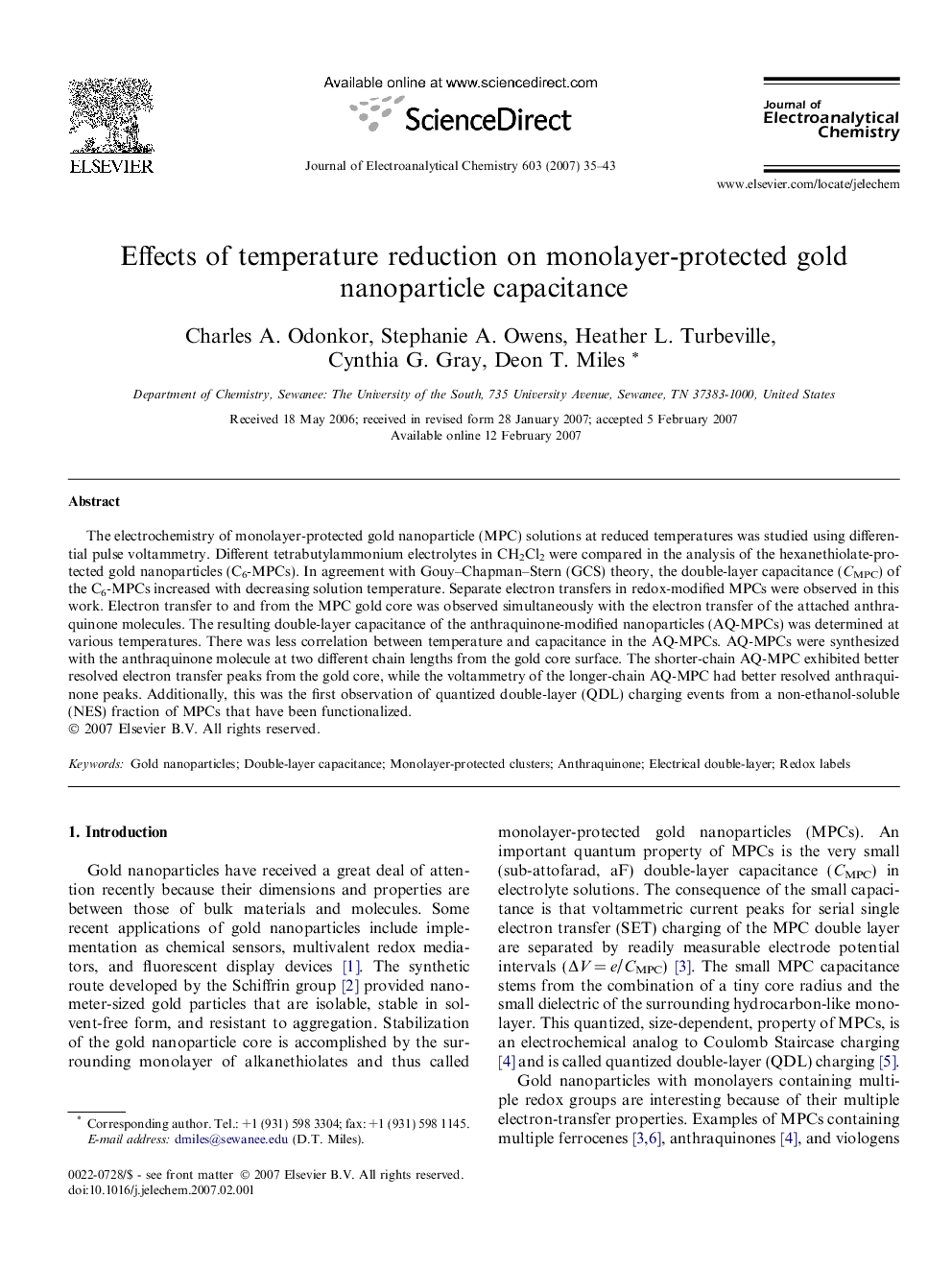| Article ID | Journal | Published Year | Pages | File Type |
|---|---|---|---|---|
| 220924 | Journal of Electroanalytical Chemistry | 2007 | 9 Pages |
The electrochemistry of monolayer-protected gold nanoparticle (MPC) solutions at reduced temperatures was studied using differential pulse voltammetry. Different tetrabutylammonium electrolytes in CH2Cl2 were compared in the analysis of the hexanethiolate-protected gold nanoparticles (C6-MPCs). In agreement with Gouy–Chapman–Stern (GCS) theory, the double-layer capacitance (CMPC) of the C6-MPCs increased with decreasing solution temperature. Separate electron transfers in redox-modified MPCs were observed in this work. Electron transfer to and from the MPC gold core was observed simultaneously with the electron transfer of the attached anthraquinone molecules. The resulting double-layer capacitance of the anthraquinone-modified nanoparticles (AQ-MPCs) was determined at various temperatures. There was less correlation between temperature and capacitance in the AQ-MPCs. AQ-MPCs were synthesized with the anthraquinone molecule at two different chain lengths from the gold core surface. The shorter-chain AQ-MPC exhibited better resolved electron transfer peaks from the gold core, while the voltammetry of the longer-chain AQ-MPC had better resolved anthraquinone peaks. Additionally, this was the first observation of quantized double-layer (QDL) charging events from a non-ethanol-soluble (NES) fraction of MPCs that have been functionalized.
